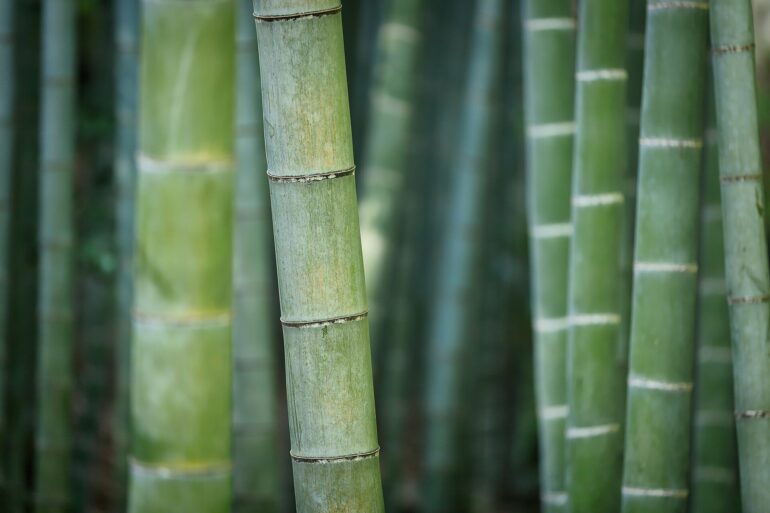Here are some little known facts about bamboo: bamboo grows fast—really fast. It has an amazing regenerative quality. It eats carbon dioxide. And it’s incredibly lightweight, strong and flexible.
So, your classic synthetic fiber material, commonly used in the transportation, construction and athletic industries, is problematic for a variety of reasons. This material—such as polyester or carbon—is derived from petrochemicals that are neither renewable nor biodegradable. Indeed, their manufacturing process is complex, energy intensive and expensive as well; however, they continue to be utilized due to their strength alone.
Seeing an opportunity for improvement in this area, a University of Maryland research team led by Liangbing Hu—Herbert Rabin Distinguished Professor and director of the Center for Materials Innovation—created a novel top-down approach for the production of cellulose macrofiber made entirely from bamboo. This was achieved via a mild delignification process and simple air-drying. The resulting material is significantly stronger than wood-derived fibers, of comparable strength to synthetic fibers, and much easier on the environment. The work was published in Nature Sustainability on December 16.
The rigid macrofibers of bamboo are embedded within a matrix of hollow parenchyma cells, which stick together in a natural polymer glue made up of stiff lignin and amorphous hemicellulose.
“We were able to extract these lightweight, high-performance fibers using the peroxyformic acid as a delignification agent,” said Hu. “The lignin/hemicelluloses binder was broken down, allowing the nearly solid cellulosic macrofibers to be separated and collected with little mechanical damage.”
These bamboo cellulose macrofibers offer a substantial reduction in greenhouse gas emissions compared to cotton, spider silk, carbon, nylon and even rayon fibers. Moreover, the bamboo fibers are relatively inexpensive and easy to produce, offering a range of structural applications across an array of automotive, aeronautical, construction and textile industries.
Said Yuan Yao, industrial ecology and sustainable systems assistant professor at Yale: “I was excited to be part of this study given its huge potential to replace many carbon-intensive materials with an abundant, sustainable material, geared towards an ecologically responsible future.”
Sheldon Q. Shi, P.E., professor, and fellow at the Society Wood Science and Technology (SWST) added: “The technology presented in this study provides a revolutionary approach to maximizing natural bamboo utilization.”
More information:
Zhihan Li et al, Sustainable high-strength macrofibres extracted from natural bamboo, Nature Sustainability (2021). DOI: 10.1038/s41893-021-00831-2
Provided by
University of Maryland
Citation:
Bamboo fibres offer strong, ‘green’ manufacturing alternative (2021, December 17)



